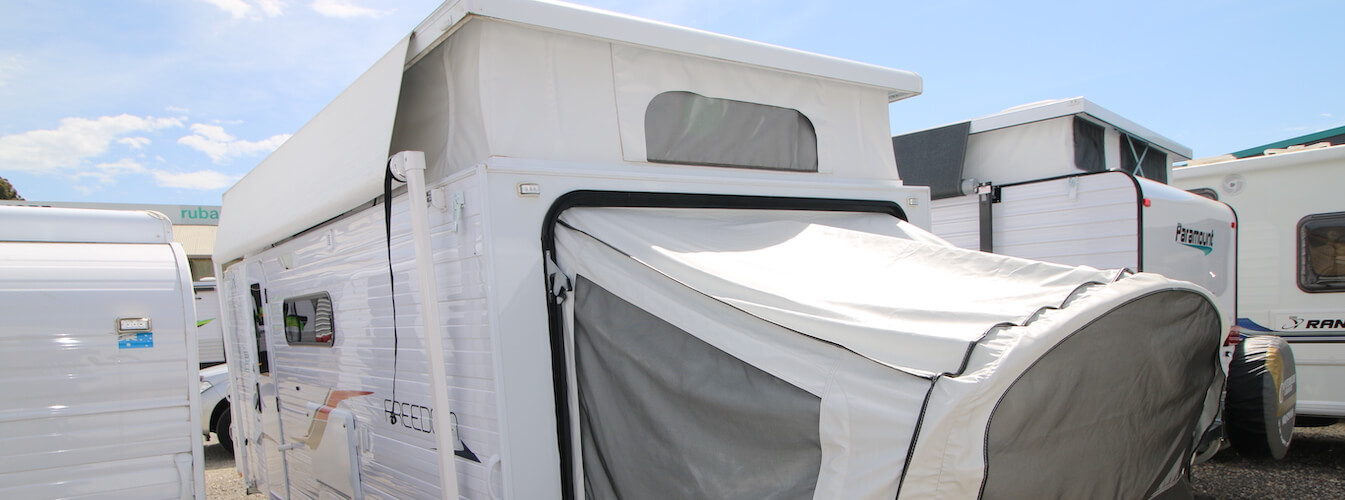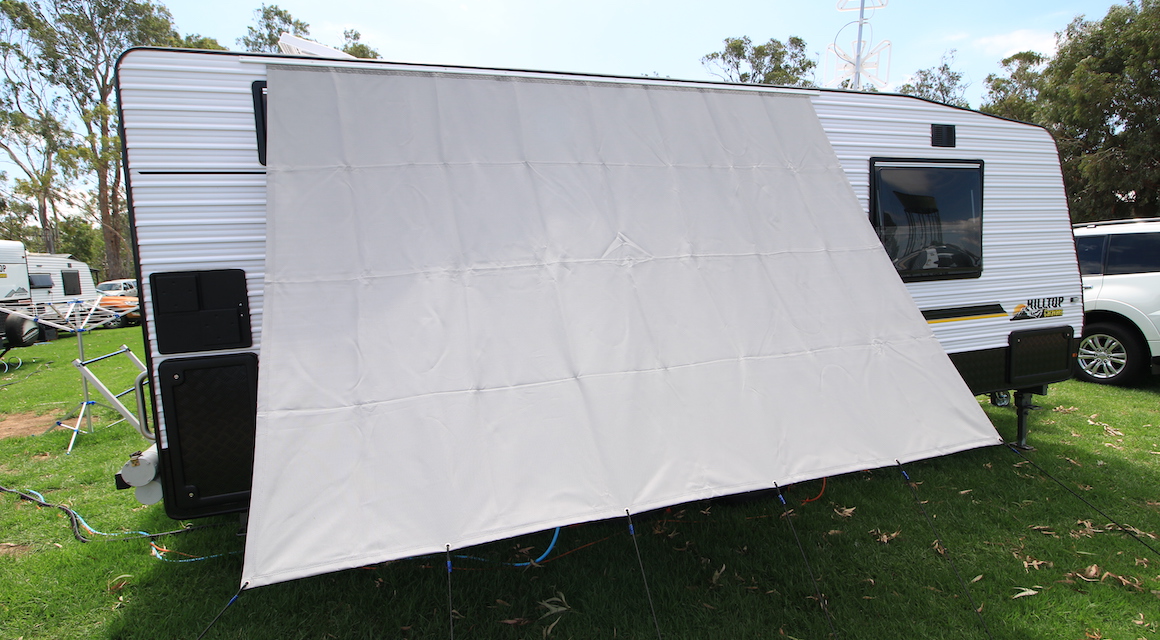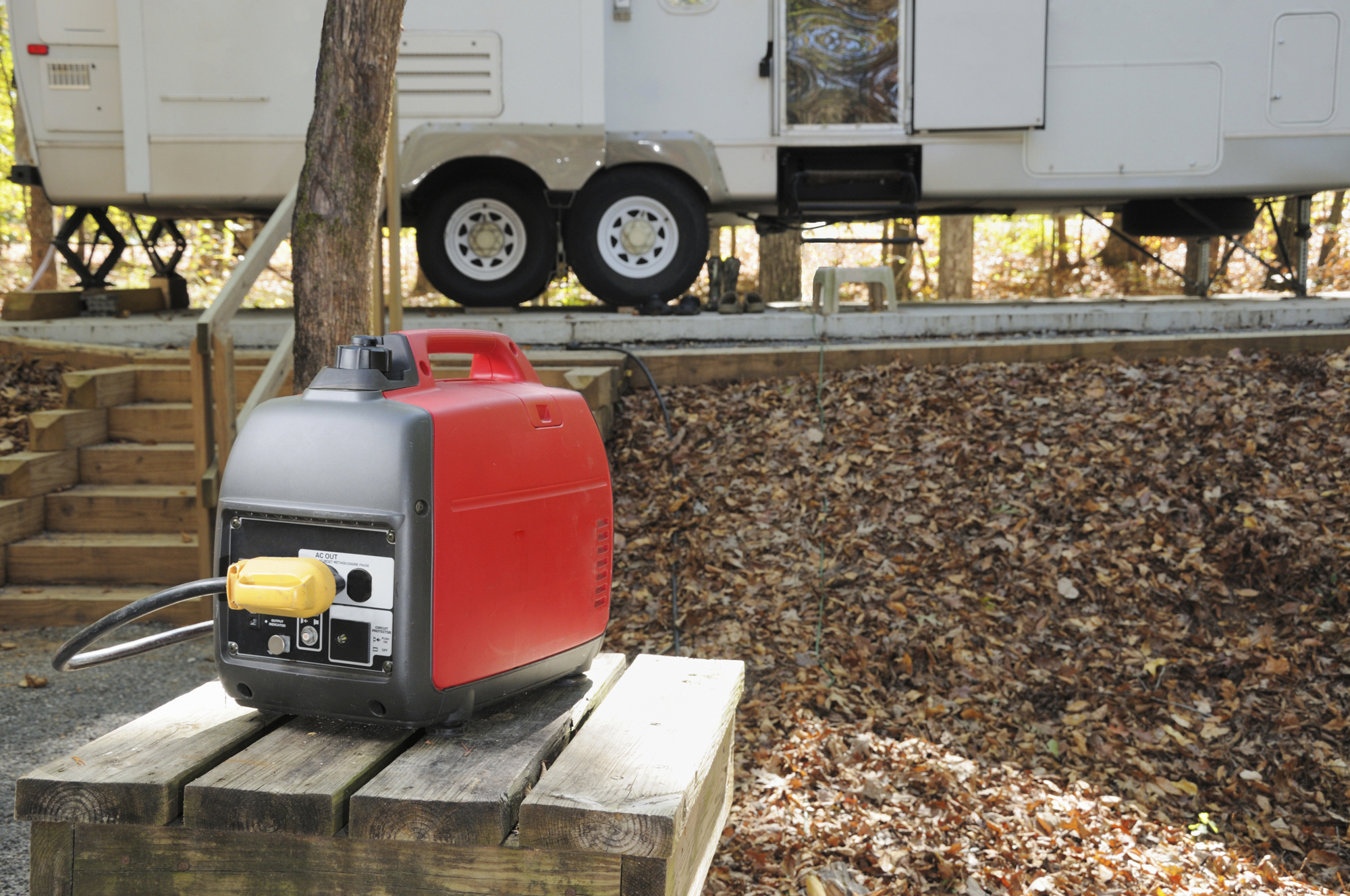You’ve decided you want to hit the road immediately. You don’t want to wait for a new van to be built and so you’ve settled on purchasing a second-hand van. Fair enough.
Unless it’s a particularly new second-hand caravan, or it has been very well cared for, it’s likely the van will be showing signs of wear and tear. A few bumps and bruises, however, should not necessarily be considered signs of neglect. My own van has a few nicks here and there, but that’s life.
While many damaged or worn aspects of a caravan (or camper trailer) can be overlooked and repaired later, provided any such defects are reflected in the price, there are a few areas that require particular attention. Depending on the severity of damage or repair work involved, be prepared to walk away.
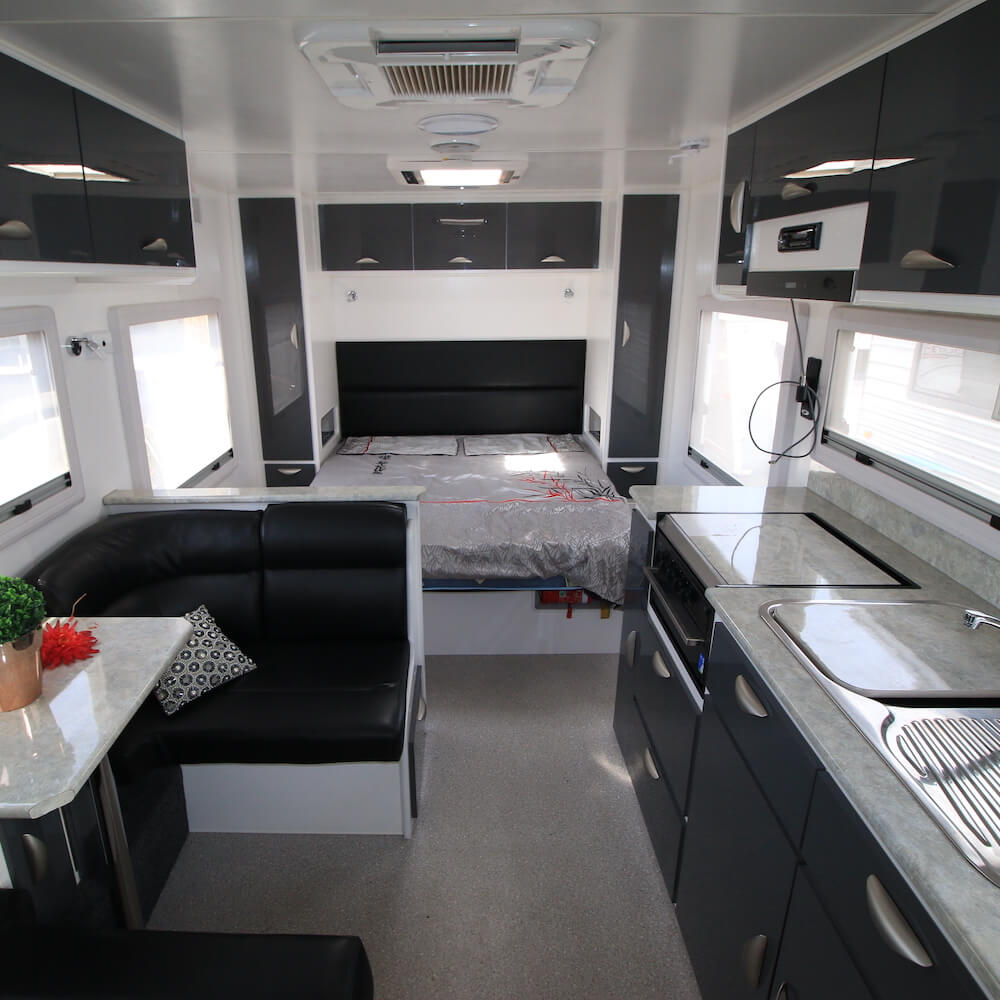
CHASSIS AND A-FRAME
The chassis is the foundation of the caravan. Any signs of disrepair should be thoroughly investigated before committing to the purchase.
The vast majority of chassis of Australian-made caravans are made from galvanised box-section steel, with cross members welded between the main chassis members. In many instances, there will also be a chassis ‘raiser’ welded to the main rails, too.
As you inspect the chassis, look for signs of fatigue and cracks, particularly at joins and other stress points. Do all welds appear strong?
It is possible to repair a cracked chassis, depending on its location and the severity, but why buy somebody else’s problem? Any chassis damage beyond a little light surface rust that can be removed by a wire brush should, in my opinion, be considered a deal-breaker.
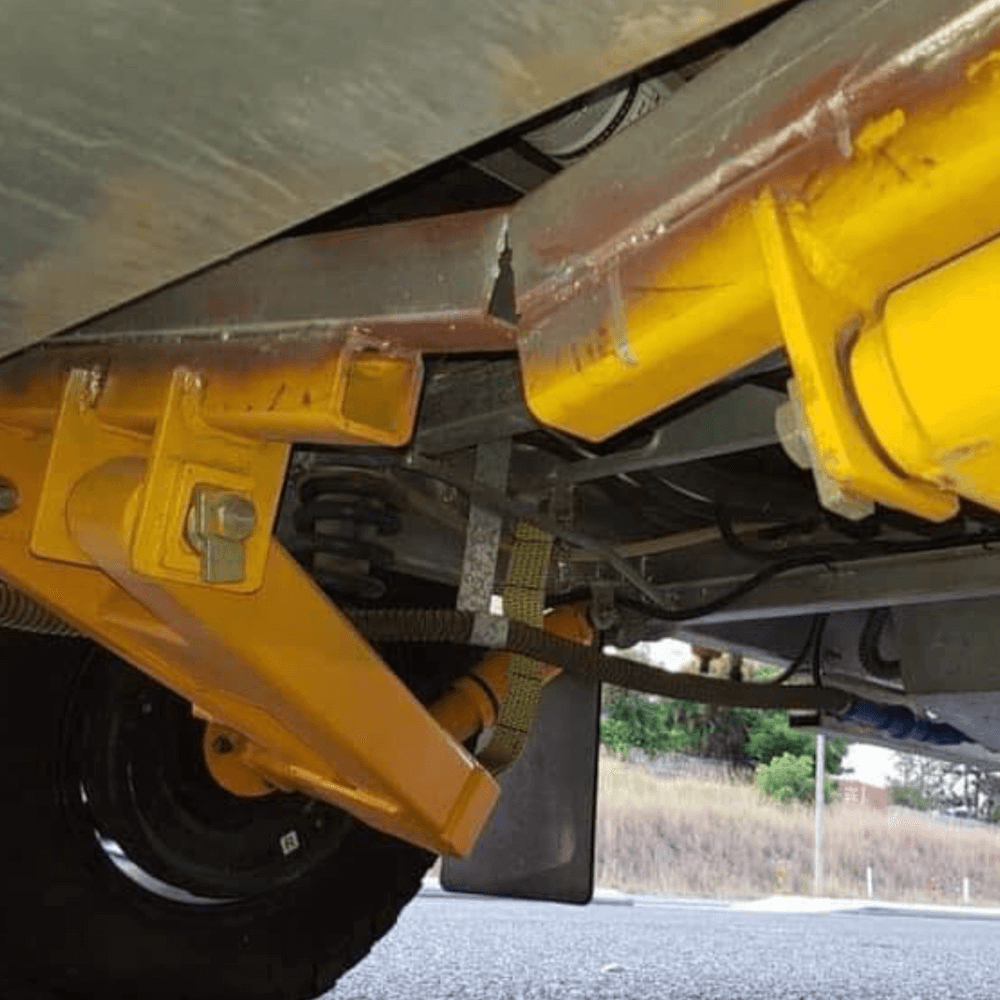
SUSPENSION
Swapping out a suspension system on a caravan is certainly possible, and replacing like-for-like parts is, in some cases, considered maintenance.
Before delving too deeply into the components of the running gear that you can’t see, start with the things you can. If the suspension system is fitted with shock absorbers, are they showing signs of leaking fluid? Do the coils appear in good order? Are the bushes worn out? If it’s a leaf spring system, is the leaf pack showing signs of fatigue?
Any one of these items could easily be replaced by a suspension specialist; however, there comes a point when it becomes all too expensive, and only you know how much repair work you’re willing to fund.
Call in an expert if you’re unsure as a full replacement of the van’s suspension system will not be cheap. Sometimes, it’s better to just keep looking – there are plenty of vans on the second-hand market, and you’ll easily find a comparable rig with suspension in better condition for a similar price.
Further, suspension that looks ‘used and abused’ should tell you something about how the van has been treated overall.
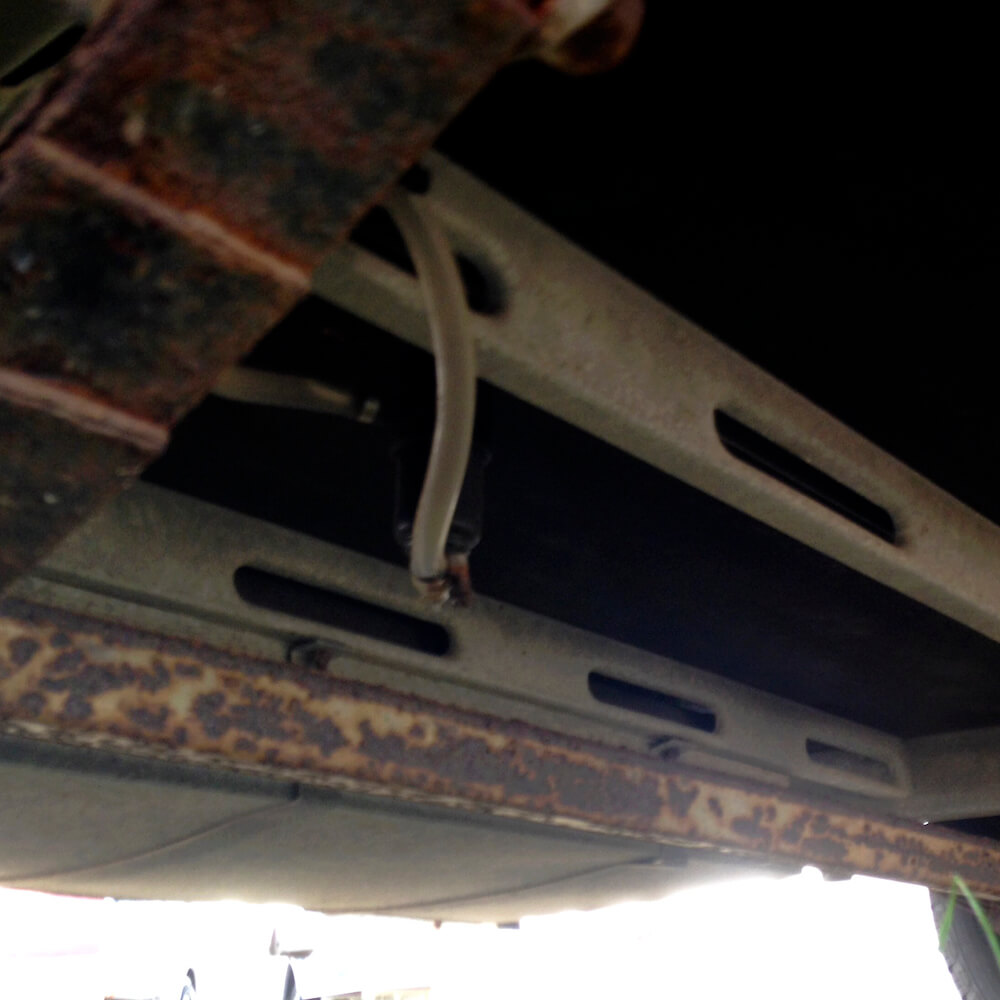
STRUCTURAL DAMAGE
Without physically removing the cladding, it’s difficult to determine the structural integrity of a caravan before purchasing it; however, there are telltale signs that could help you avoid purchasing a major headache.
All walls should be straight and uniform. Changes in colour might suggest repairs. Check for cracks around the windows, doors, cupboards, and check that all doors open and close easily.
Inspect the lower and upper edges, where the walls meet the floor and ceiling, for signs of water damage.
Don’t forget to look for discolourations and other signs of water ingress within external storage lockers.
Use a ladder to check the roof, paying close attention to all seals, both where the walls meet the roof and those of the external hatches and vents. Excessive warping of the roof skin could indicate a serious problem, though slight warping could be normal, especially if the van has been left outside in hot weather.
One of the best tools you can bring to an inspection of a used caravan is a moisture meter. This will allow you to test moisture content inside the walls of the van.
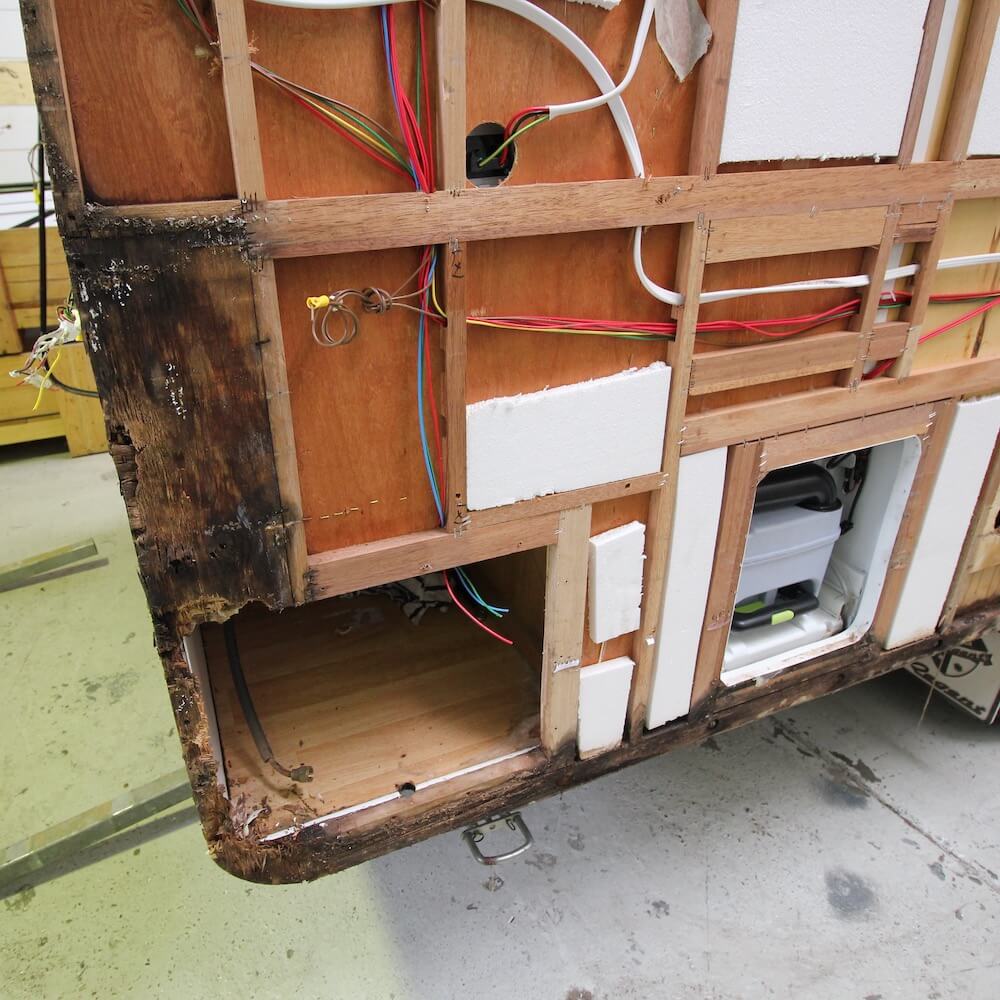
WEIGHT
It’s highly recommended that any second-hand caravan is independently weighed before purchase. You have no idea what previous owners have added or subtracted to the van, and it’s almost inevitable that the Tare on the compliance plate is not the van’s actual unladen weight. Proceed with caution. If you are not comfortable with the weight of the van after it has been weighed, don’t buy it.
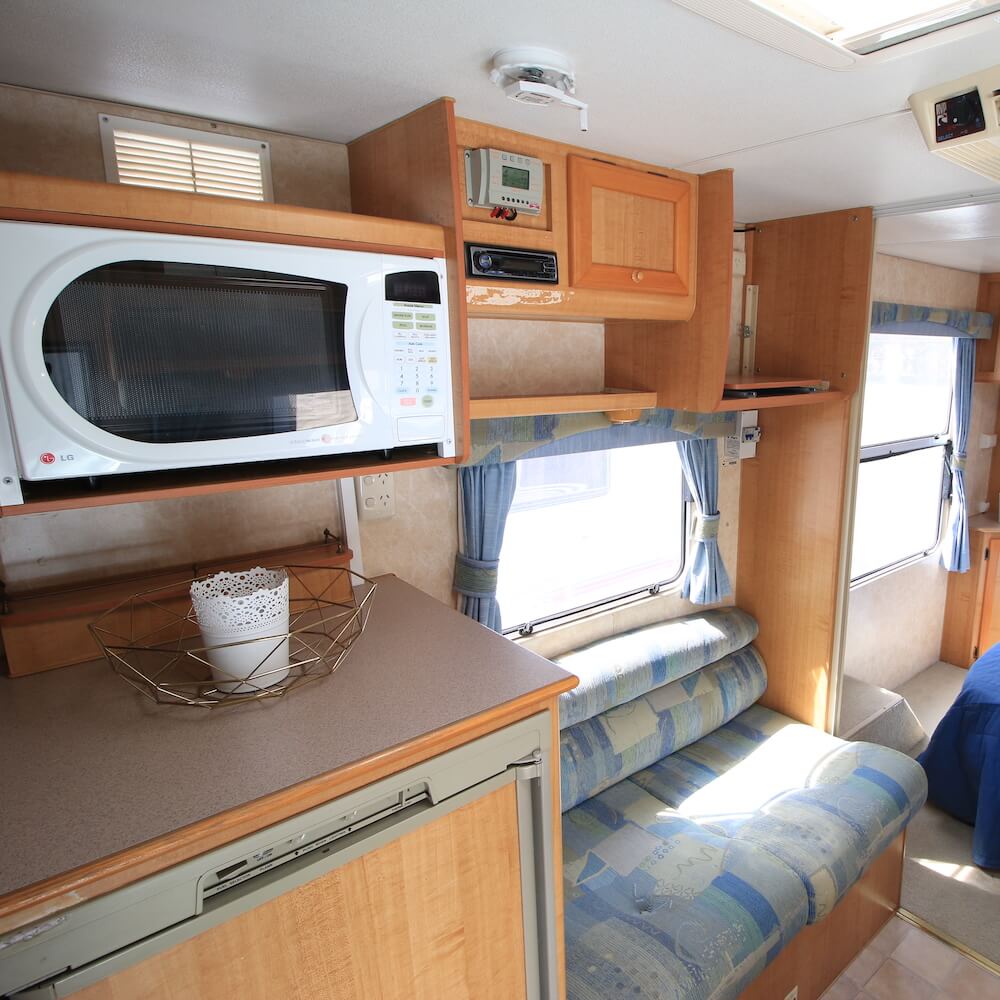
FINAL TIPS
If this all seems too much, remember that there are professional inspectors who will do the work for you, and even provide a written pre-purchase report as to the van’s condition. This should include sign-off on the electrical and gas systems. Depending on the nature of any repair work to these systems that’s required, don’t buy the van if they don’t pass muster.
This article is not intended as a comprehensive checklist of what to inspect before purchasing a second-hand van. Rather, we’ve only looked at the areas where I believe you should abandon the purchase if they don’t present as fit for service.
It’s possible – or even likely – that other parts of the van will require attention, from the state of the coupling to the age and tread of the tyres, and these should be investigated too. You might even be able to negotiate the cost of the repairs into the final price.
Finally, don’t buy the first van you inspect. As mentioned, there are plenty of used RVs on the market – why settle for something that will need expensive repairs?
MEET THE AUTHOR

Max Taylor
Max Taylor has been caravanning since he was a kid and was the editor of some of Australia’s most well-known RV publications for almost 10 years.

